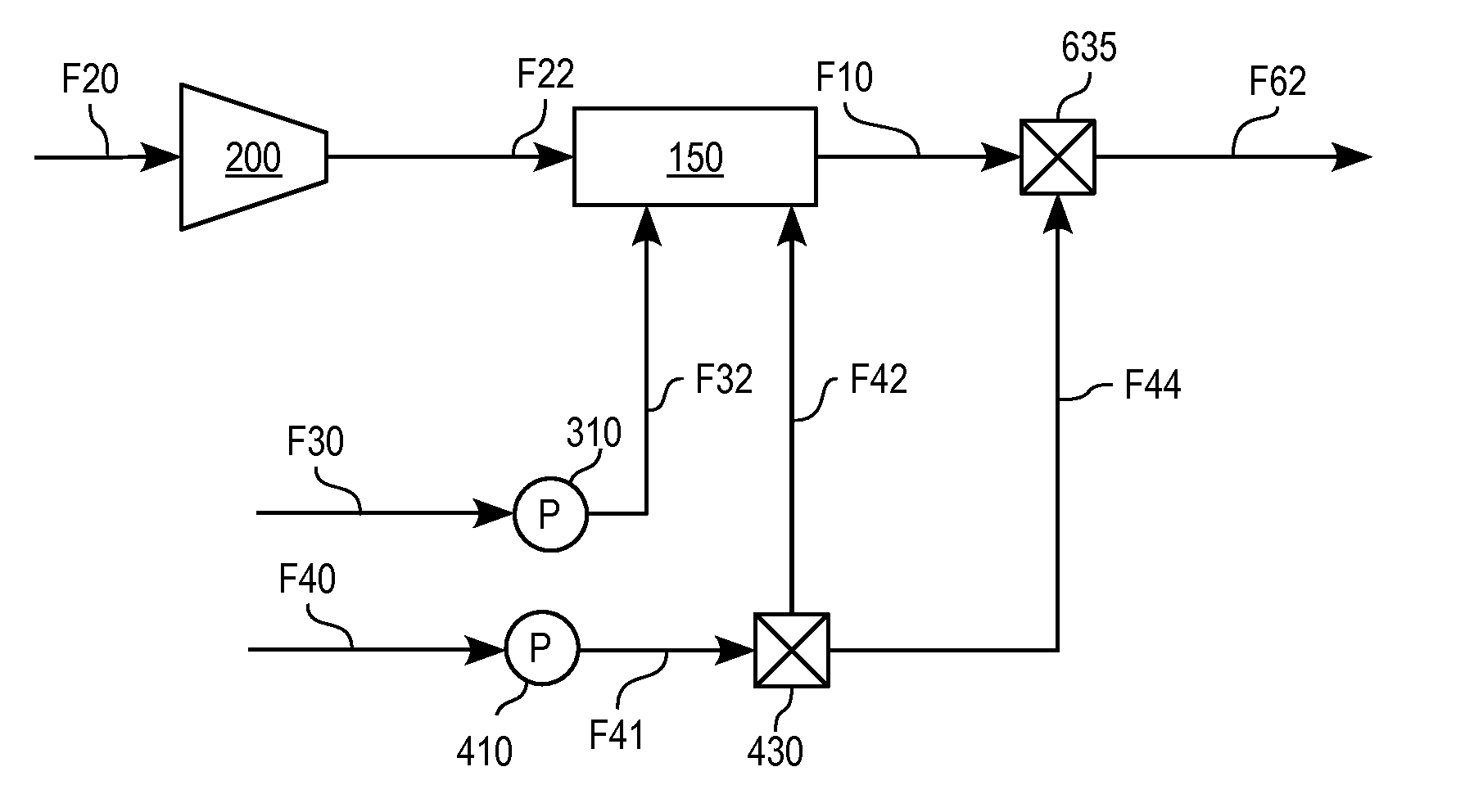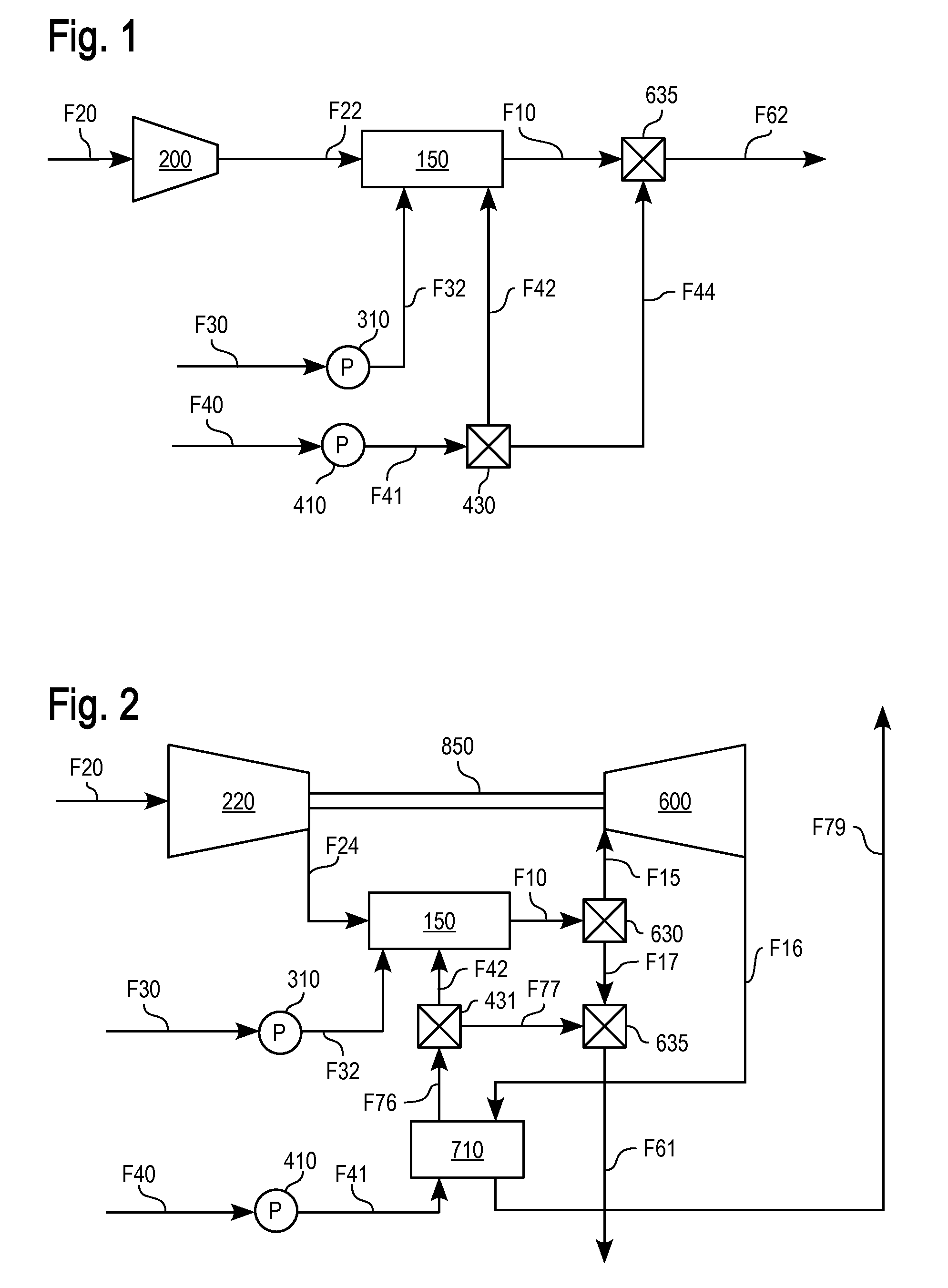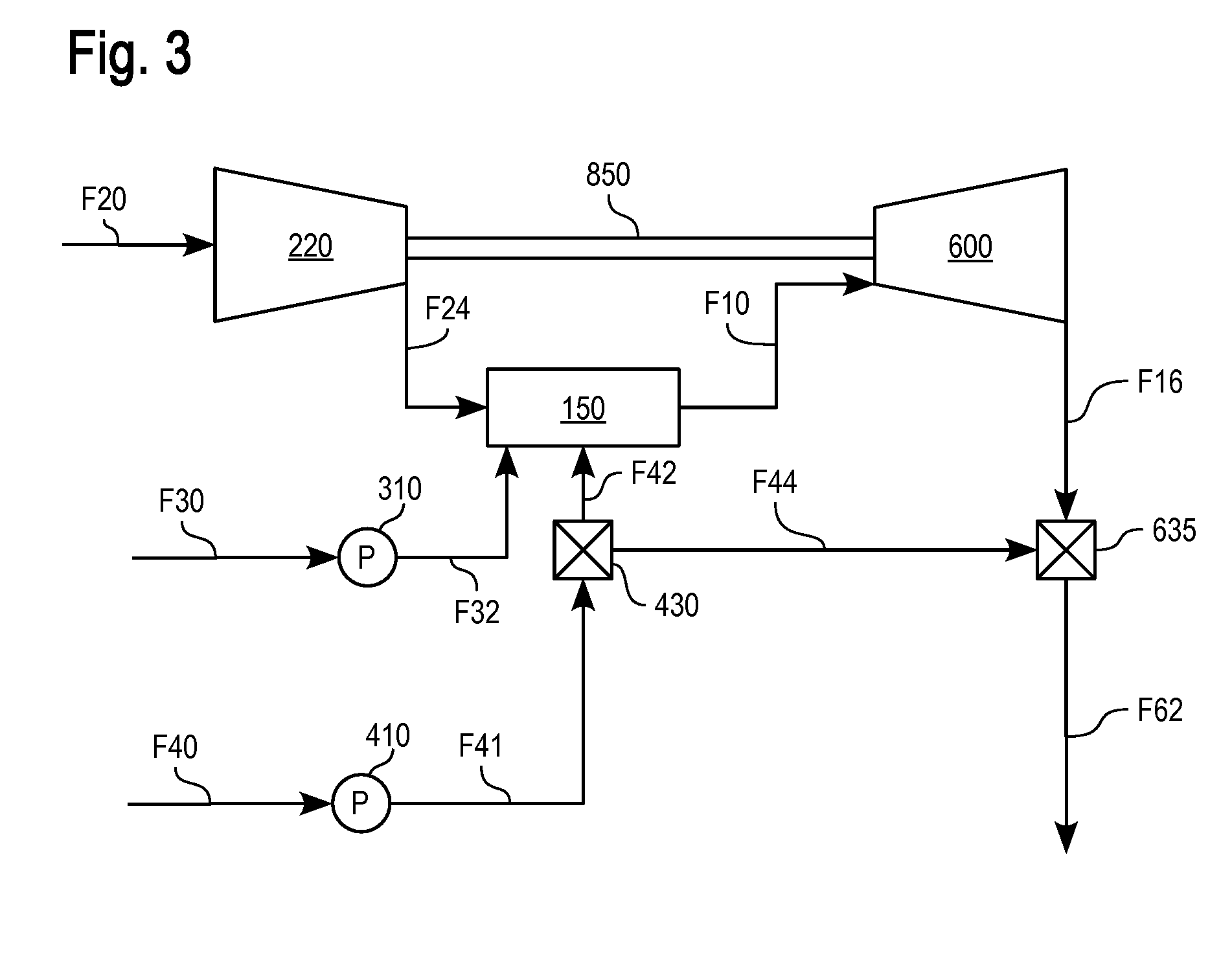Heavy oil recovery with fluid water and carbon dioxide
a technology of fluid water and carbon dioxide, which is applied in the direction of fluid removal, earth-moving drilling, borehole/well accessories, etc., can solve the problems of increasing the cost of extraction, and difficulty in discovering conventional oil reserves, so as to improve the extraction efficiency and improve the extraction efficiency. , the effect of increasing co2
- Summary
- Abstract
- Description
- Claims
- Application Information
AI Technical Summary
Benefits of technology
Problems solved by technology
Method used
Image
Examples
example 1
100° C. Atmospheric VASTgas from Natural Gas Fuel (Water / Fuel=W / F=ω=10.6)
[0093]Referring to FIG. 1, in one embodiment, a fuel fluid comprising fuel F30 is pressurized by a pressurizer, pump, blower, or compressor 310 which delivers a pressurized fuel fluid F32 to a VAST combustor, or thermogenerator 150. An oxidant fluid comprising an oxidant F20 is pressurized by a pressurizer, pump, blower, or compressor 200 which delivers a pressurized oxidant fluid F22 to the combustor 150. oxidant and fuel are combusted to form products of combustion. Diluent fluid F40 is pressurized by a pressurizer, pump, blower, or compressor 410 to form pressurized diluent fluid F41.
[0094]A portion of diluent fluid F41 may be distributed by splitter distributor 430 to deliver combustor diluent fluid F42 upstream of the outlet of combustor 150 to form VASTgas or process fluid F10 comprising products of combustion and vaporized thermal diluent. Another portion F44 of diluent fluid F41 may be mixed with the VA...
example 2
1 atm VAST Cycle Burning Coke Fuel (Water / Fuel =ω=7.1)
[0108]In another configuration C1C, an atmospheric VAST cycle burner was modeled burning coke with combustion gases diluted to a temperature of 482° C. (900° F.) with a small excess air as oxidant fluid. Coke composition: 79.7% C, 4.47% S, 2.3% H, 10.6% H2O, 0.27% ash; 5% excess air. i.e. Λ=1.05). Table 1 shows the mole fraction compositions of input gases / fuel and VASTgas outputs. The input flow rates of fuel, air and water were 0.45 kg / s, 5.32 kg / s, and 3.20 kg / s respectively, giving a W / F ω of 7.1. The input temperatures were 15° C. for air and water, and 25° C. for fuel.
[0109]The energetic fluid (VASTgas) temperature for this example is 100° C. Additional water at 1.86 kg / s is added to the combustion gases to reduce their temperature from the 482.2° C. combustor outlet temperature to 100° C. (total water flow=5.07 kg / s). Delivering VASTgas at 100° C. provides the maximum steam in the VASTgas without condensation.
[0110]The CO2...
example 3
Diverted VAST Cycle Gas Turbine Combustion Gases
[0114]Gas turbines are highly efficient means to produce both electricity and mechanical energy at high specific power levels from various fuels. The use of high water (liquid water or steam) injection levels to increase the specific power of such systems is well known in the art, e.g., U.S. patent application Ser. No. 10 / 763,057 (Hagen et al.). Using water allows higher fuel injection levels for a given input fluid flow (water and air). This is due to the higher specific heat of water as compared to air and the corresponding ability of water to provide greater cooling for a given mass flow of fuel being combusted.
TABLE 1VAST Thermogenerator wet combustion vs dry combustion.OUTPUT GASESINPUT GASES / FUELVASTVASTVASTVASTDryDryCoke FuelNG FuelAir v %Gas v %Gas v %Gas v %Gas v %CombustionCombustionAtom orv % atv % atat 15° C.at 482° C.at 100° C.at 482° C.at 100° C.v % atv % atMolecule25° C.25° C.RH 60%(coke)(coke)(NG)(NG)1035° C. (NG)100° C...
PUM
 Login to View More
Login to View More Abstract
Description
Claims
Application Information
 Login to View More
Login to View More - R&D
- Intellectual Property
- Life Sciences
- Materials
- Tech Scout
- Unparalleled Data Quality
- Higher Quality Content
- 60% Fewer Hallucinations
Browse by: Latest US Patents, China's latest patents, Technical Efficacy Thesaurus, Application Domain, Technology Topic, Popular Technical Reports.
© 2025 PatSnap. All rights reserved.Legal|Privacy policy|Modern Slavery Act Transparency Statement|Sitemap|About US| Contact US: help@patsnap.com



